Products Liability
Make Sure Not to Buy from the “10 Worst Toys” of 2014 List
Before you shop, please check out the Worst Toys of 2014 list by W.A.T.C.H. Since last year, there have been at least 17 toy recalls in the U.S. and Canada, accounting for 5 million defective toys, reports the watchdog group which releases its list annually.
Shop carefully, even at familiar and trusted stores. Of course you should avoid the toys listed below. But make your own judgments on the safety of the toys you are considering. The main things to beware of are:
- Marbles and small pieces
- Sharp edges
- Small magnets
- Flimsy toy accessories or pieces which are loosely attached
- Toys with strings (such as musical instruments and necklaces)
- Toys which shoot sharp projectiles
Also, remember to buy toys which are age-appropriate, read the warnings on the toy box and watch out for toy packaging materials. Toys and many products come with an almost-invisible plastic lining on mirrors, digital screens and other pieces. Many also come with a lot of plastic wrap. These are all choking hazards and you should remove them before giving toys to children.
Here are the W.A.T.C.H. nominees for the “10 Worst Toys” of 2014.
1) Air Storm Firetek Bow
This toy is designed for children 8 years and older, but it shoots arrows up to 145 feet high in the air and can cause eye injuries. It has glow pieces and is marketed for day or night use, thought it warns against use in the “complete dark.” Finally, the packaging carries several other warnings, more than most people want when buying a toy. It sells for under $25 at Walmart and Amazon.com.
2) Radio Flyer Ziggle
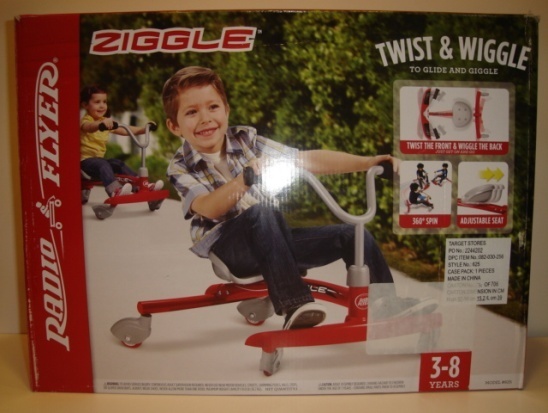 The seat on this bike is too low, just 8 inches off the ground, W.A.T.C.H. said. The bike’s packaging also features young children who are not wearing bike helmets, which puts them at risk for head injuries. The $39.99 bike is sold at Target, Toys R Us and Amazon.com and is recommended for children ages 3 to 8 years old.
The seat on this bike is too low, just 8 inches off the ground, W.A.T.C.H. said. The bike’s packaging also features young children who are not wearing bike helmets, which puts them at risk for head injuries. The $39.99 bike is sold at Target, Toys R Us and Amazon.com and is recommended for children ages 3 to 8 years old.
3) Catapencil
This pencil is also a catapult. The packaging encourages children to enjoy target practice from their desktops and reads, “Because the pencil is mightier than the sword.” There are no safety warnings or age recommendations. This $3.99 toy is sold at Amazon.com, Ebay.com and Learning Express.
4) Alphabet Zoo Rock and Stack Pull Toy
This toy has a 20-inch cord, which is eight inches longer than industry safety standards. It creates a strangulation risk for young children and the manufacturer even warns parents about this risk on the packaging. This toy is sold for $19.99 at Amazon.com, Toys R Us and Magic Beans stores.
5) SWAT Electric Machine Gun
Junxing Toys Industrial Co. warns buyers on the packaging that its toy gun may be mistaken for an actual firearm by law enforcement officers and others. W.A.T.C.H. rightfully says there is “no excuse for outfitting children with realistic toy weapons designed to produce potentially dangerous and unnecessary thrills.” The recent killing of a 12-year old, who was carrying a toy gun mistaken in for a real gun, in Cleveland is a serious reminder of this risk.
6) Wooden Instruments
This toy is designed for children 12 months and older, but includes a 4 ½ inch long drumstick which children can mouth and get lodged in their airway. Additionally, there are no warnings on the toy, which is sold at Walmart.
7) Bottle Rocket Party
This toy makes use of projectiles which can strike and injure a child. There are safety goggles advertised on the packaging, but they are not packed in the box. This toy by Norman & Globus is recommended for children age 8 and older and is sold for $14.99 at Walmart.com, Amazon.com and the Village Toy Shop.
8) Lil’ Cutesies – Best Friends
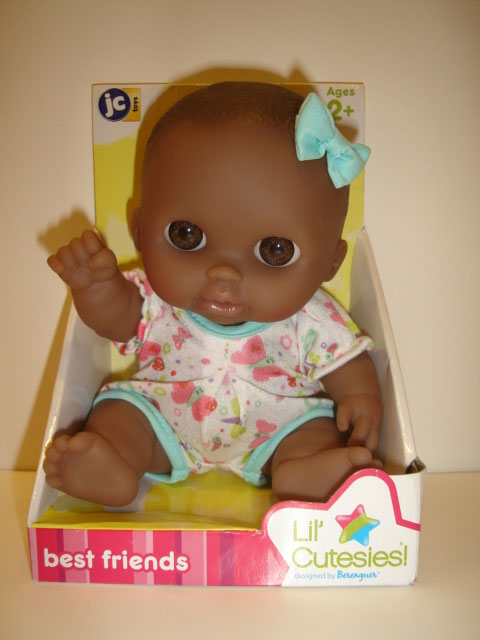 While advertised as the “perfect friend for your little one,” this toy is dangerous, according to the W.A.T.C.H. report. The decorative bow can detach from the doll’s head and pose a choking hazard. The toy is designed for children age 2 and older. It is sold for $7.99 or less at Kmart, Toysrus.com and Amazon.com.
While advertised as the “perfect friend for your little one,” this toy is dangerous, according to the W.A.T.C.H. report. The decorative bow can detach from the doll’s head and pose a choking hazard. The toy is designed for children age 2 and older. It is sold for $7.99 or less at Kmart, Toysrus.com and Amazon.com.
9) True Legends Orcs Battle Hammer
This hammer is marketed to children as young as 3 years old, yet it comes with a hammer which stretches nearly 2 feet. Do not look for safety warnings and instructions–there are none! It is distributed by Toys R Us and sold at stores for under $15.
10) Colored Hedgehog
The hedgehog’s hair can be easily pulled out, posing a risk for ingestion and aspiration injuries, W.A.T.C.H. says. This infant toy is sold for $10.99 at Toys R Us.
Read the full Worst Toys of 2014 list. Photo credit on this blog: W.A.T.C.H. and the Worst Toys of 2014 report.
Read More
Shop Carefully for Strollers, Car Seats and Holiday Gifts for Families
 Ready or not, the holiday shopping season begins in earnest this week. Enjoy shopping for loved ones, but remember to buy with caution, especially when selecting toys and products used by young children. The Consumer Product Safety Commission (CPSC) recalled millions of unsafe toys this year, and also many of the most basic children’s products, including car seats, strollers and furniture. Shoppers should closely examine every purchase. Here are a few holiday shopping tips:
Ready or not, the holiday shopping season begins in earnest this week. Enjoy shopping for loved ones, but remember to buy with caution, especially when selecting toys and products used by young children. The Consumer Product Safety Commission (CPSC) recalled millions of unsafe toys this year, and also many of the most basic children’s products, including car seats, strollers and furniture. Shoppers should closely examine every purchase. Here are a few holiday shopping tips:
Check for recalls. Search the CPSC database to see if a specific product has been recalled. You can also search by company.
Here are some of the important ones to remember:
Graco Recalls. Graco recalled millions of car seats earlier this year because of sticky-buckles which were trapping children in the seats. Just last week, it also recalled 4.7 million defective strollers which can cause finger amputation. Graco recalled the 11 stroller models after 10 fingertip amputations and one finger laceration. The strollers were sold from 2010 until earlier this month at a number of retailers, including Target, Toys R Us, Walmart, Amazon.com and Walmart.com. Read the recall notice.
Furniture Recalls. Common home furniture also caused child injuries this year. In August, Ace Bayou recalled 2.2 million bean bag chairs after two children unzipped them, crawled inside and suffocated to death. Anyone with one of these defective chairs should call the company for a repair kit to disable the zipper.
Another serious recall impacted in Massachusetts. Earlier in the year, Lane furniture renewed its recall of wooden cedar chests after two children in Franklin became trapped in one and suffocated. The children had apparently been playing hide-and-seek and became locked inside. The company first recalled the chests in 1996, but millions of the defective chests are believed to still be in use without the necessary repair.
In the Massachusetts case, the children’s family is believed to have bought the used chest at a second-hand store more than a decade ago. Second-hand sales are challenging to regulate, as are families and friends who pass along used products to each other. This makes it important to know the characteristics of an unsafe product as well as specific products which have been recalled.
Buy age-appropriate. Read the age recommendation on toys and children’s products. Consider a child’s family. If you are buying for a child with younger siblings, buy something which is safe for all ages in the household.
Be careful buying online. After a product is recalled, it is against the law to sell it in stores or online. But some auction and online listing websites do not police private sellers closely. Avoid these sites when holiday shopping for children.
If you purchase through a merchant website such as Amazon.com, make sure you receive the right product and that it has the same age appropriate label and pieces as shown online.
Beware of suffocation and choking hazards. Avoid balloons, marbles and toys with small pieces which children can put in their mouth. Also avoid small magnets. Remember these things come with many toys, but they also come from other gifts and products that enter a home. For instance, the magnet desk sets which were so popular many years ago for adults turned out to be extremely dangerous for children. In some cases with the Buckyball magnet sets (which have been recalled), children found small magnets years after families brought the set into their home in hard-to-reach places, such as under a couch. Our point is: Please consider every gift carefully.
Read More
Former Employees: Takata Hid Airbag Defects
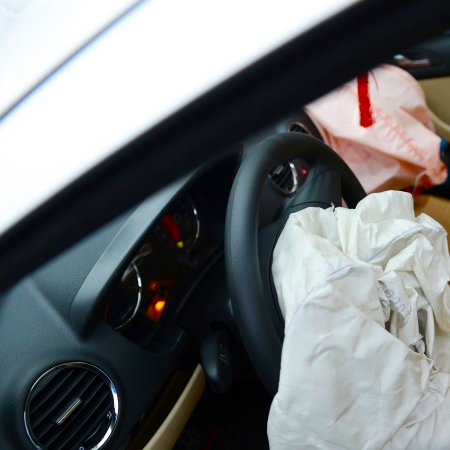 Long before the deaths and injuries, Takata knew its airbags were defective, according to two former employees of the company.
Long before the deaths and injuries, Takata knew its airbags were defective, according to two former employees of the company.
In fact, Takata knew about the defects as far back as 2004, the workers told The New York Times. The Japanese company learned one of its airbags exploded and sent metal debris spewing at a driver in Alabama, then began secret testing at its U.S. headquarters in Michigan. The testing was conducted outside normal work hours and was never disclosed until now. Three months into testing, employees began to theorize the problem was the welding on the airbag’s inflator canister, but the investigation was shut down and employees were instructed to destroy all testing data.
It took Takata four years to report the faulty airbags in a regulatory filing. In November 2008, the first Takata airbags were recalled.
The law requires car manufacturers to report safety defects to the government within five days once they are identified. This year has seen the most auto recalls in U.S. history and some hefty fines for Toyota and General Motors for failing to disclose defects. In March, Japan-based Toyota agreed to pay $1.2 billion to the U.S. government to avoid prosecution for hiding “unintended acceleration” defects. In May, General Motors was ordered to pay a record $35 million civil fine for failing to disclose deadly ignition switch defects.
Starting in 2008, Takata’s airbag recalls continued slowly, then got a big push last month from the National Highway Traffic Safety Administration (NHTSA). NHTSA issued a consumer advisory which urged drivers to immediately check if their vehicle’s airbags had been recalled and arrange for a repair. To date, 11 car manufacturers have recalled more than 14 million vehicles worldwide. Four deaths have been linked to the defective airbags and at least 139 people have been injured.
A few notes about this story:
Check Your Car. Every driver should check if their car has been recalled at SaferCar.gov. You can also read our blog for answers to many common consumer questions. Most impacted drivers will have to wait for replacement airbags so it is best to call your local dealer as soon as possible. Some carmakers are advising drivers not to carry passengers until their airbags have been replaced.
Why the Airbags are Defective. The airbags are defective because they have a steel canister which can crack when the device deploys in a car crash, sending metal, plastic and chemicals exploding at drivers and front seat passengers. The airbags have an inflator, which is comprised of a propellant based on a common compound used in fertilizer.
Honda. One question going forward is: How much did Honda know? This matters because Honda made more than 5 million of the recalled vehicles. The New York Times reports a 2002 Honda Accord was involved in the 2004 accident in Alabama. Honda officials say Takata assured them the accident in which a driver was injured by a ruptured airbag was an “anomaly.” Honda settled the case with the driver but Takata began its own secret testing, according to the employees. The NHTSA has ordered Honda to produce all its documents related to the Takata airbag recall by Dec. 15, so we may learn more then.
About Breakstone, White & Gluck
The Boston product liability lawyers at Breakstone, White & Gluck have over 100 years combined experience representing clients injured by negligence in Massachusetts. If you have been injured, learn your rights. For a free legal consultation, contact us at 800-379-1244 or 617-723-7676 or use our form.
Check Your Car’s Airbags After Recalls Linked to Four Deaths, Injuries
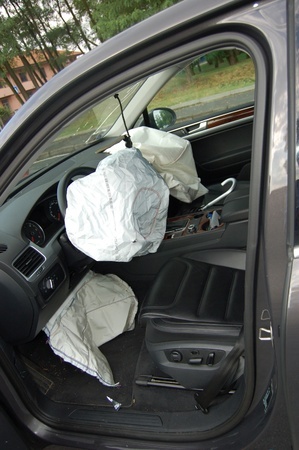 Last week, the National Highway Traffic Safety Administration (NHTSA) issued an advisory urging the public to act immediately on recall notices impacting 7.8 million cars with Takata airbags. The airbags are now linked to four deaths and more than 100 injuries.
Last week, the National Highway Traffic Safety Administration (NHTSA) issued an advisory urging the public to act immediately on recall notices impacting 7.8 million cars with Takata airbags. The airbags are now linked to four deaths and more than 100 injuries.
If you have not already done so, please immediately check if your vehicle’s airbags have been recalled. Visit Safercar.gov. Select your auto manufacturer and enter your vehicle identification number, or VIN.
While car manufacturers are required to notify owners of recalls, do not wait to receive a letter for the company. While many of the airbags were previously recalled, you may have missed an earlier letter or may not have appreciated how serious the recall actually is.
The recalls involve Toyota, Honda, Mazda, BMW, Nissan, Mitsubishi, Subaru, Chrysler, Ford and General Motors. More than 5 million of the cars are Honda models. Many are older vehicles from the 2000-2007 model years.
After you check the site and contact your dealer, be prepared to wait. Unfortunately, many dealers do not have the parts they need to meet demand.
Prior to last week’s announcement, 2014 was already the worst year ever for auto recalls, with 50 million vehicles recalled. One in five cars in our country has a defect. General Motors (GM) paid a $35 million fine last spring and has recalled 26 million vehicles.
Why are the airbags defective?
These airbags have inflator mechanisms which can rupture and explode, sending metal and plastic shrapnel at drivers and passengers. They use excessive force. Police were investigating the death of a woman who had been in a car accident as a homicide because she appeared to have stab wounds on her neck. Then her relatives received a letter about the airbag recall to her from home from her car manufacturer. See The New York Times article, “It Looked Like a Stabbing, but Takata’s AirBag Was the Killer.”
How long will it take to get a replacement part?
It is hard to say. Some dealers already have the replacement parts ready, but others are on back order. Some car manufacturers are warning car owners not to carry front-seat passengers until the airbag defect is fixed. Toyota is telling dealers to shut the passenger seat airbags off in all vehicles that are brought in until new parts are available.
Can I get alternate transportation?
Probably not. It is unfortunate, but most of us will have to wait for the new parts to arrive. Your local dealer may also offer you a trade-in.
I did not buy my car from a dealer. I bought it from a private party.
Check your paper work from your car’s sale for the name of the dealer who originally sold the vehicle. If you cannot find this, contact any local dealer of your vehicle and ask them to assist you.
Should I purchase a car under recall?
Unless the specified repair has been made, a dealer is not allowed to sell you a car under recall and you should never purchase one under recall from a private party either.
When you are looking to buy a car, write down the model and year, then search for it online at SaferCar.gov or the Consumer Reports Recall database.
I was planning to sell my car.
You should wait for any serious defect to be repaired before selling your car. This is the safest and most ethical option regardless of the law. But there are laws to consider, including the Massachusetts Used Vehicle Warranty Law, which states private party sellers have to disclose defects to buyers.
About Breakstone, White & Gluck
The Boston product liability lawyers at Breakstone, White & Gluck have over 100 years combined experience representing clients injured by negligence in Massachusetts. If you have been injured, learn your rights. For a free legal consultation, contact us at 800-379-1244 or 617-723-7676 or use our form.
Smoke Alarm Recall Affects More Than One Million
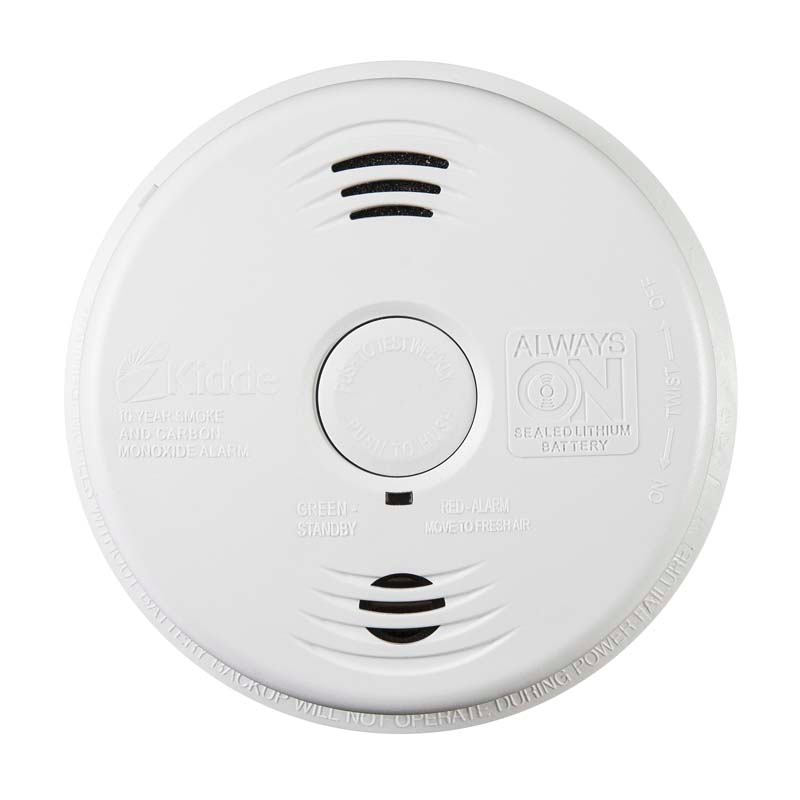 The Consumer Product Safety Commission is calling on the public to check their home smoke alarms, after more than a million units were recalled yesterday.
The Consumer Product Safety Commission is calling on the public to check their home smoke alarms, after more than a million units were recalled yesterday.
Kidde recalled 1.2 million smoke alarms in the United States and 112,000 in Canada. No injuries have been reported, but the models have a defect which may prevent them from working after a power outage. This is an important recall because each year, three to five deaths in property fires come in buildings without working smoke alarms, according to the U.S. Fire Administration.
The smoke alarms are all residential models:
- Kidde residential smoke alarm model i12010S with manufacture dates between December 18, 2013 and May 13, 2014
- Kidde Combination smoke/CO alarm il2010SCO with manufacture dates between December 30, 2013 and May 13, 2014
- Kidde Combination smoke/CO alarm model KN-COSM-IBA with manufacture date between October 22, 2013 and May 13, 2014
These smoke alarms are all hard-wired into a home’s electric system. The i12010S and il2010SCO models come with 10-year batteries inside while the KN-COSM-IBA uses replaceable AA backup batteries.
These smoke alarms look like most: white, round and are about 5 to 6 inches in diameter. Closely inspect the fine print on the front of yours for the word “Kidde.” On the backside, there is a label with the model number and manufacturing dates. “Always on” is also engraved on the front of alarms with sealed 10-year batteries.
These smoke alarms were sold at CED, City Electric Supply, HD Supply, Home Depot, Menards Inc. and other retailers. They were sold online at Amazon.com, HomeDepot.com and shopkidde.com from January 2014 through July 2014 for between $30 and $50.
Smoke Alarm Safety Tips
Daylight Saving Time. We will set our clocks back an hour for Daylight Saving Time on Sunday, November 2. The National Fire Protection Association and other safety officials recommend we also replace the batteries in our smoke alarms, test them to make sure they work and replace any models which are 10 years old.
Monthly Testing. Safety organizations also recommend we test smoke alarm batteries once a month.
Inform Others. Make sure everyone in your home knows what the smoke alarm sounds like and knows where they are located. Here is a resource for more safety and planning information.
Apartment Residents. If you rent an apartment, ask your building management company or property owner to show you the smoke alarms when you sign the lease. Contact them whenever you suspect a problem or have a question.
Read More
Defective Bean Bag Chairs Kill Two Children by Suffocation
More than two million bean bag chairs have been recalled after heartbreaking accidents in which children suffocated and died.
The Consumer Product Safety Commission (CPSC) announced last week that Ace Bayou Corp. of New Orleans, Louisiana has voluntary recalled 2.2 million bean bag chairs, including both traditional and L-shaped bean bag chairs.
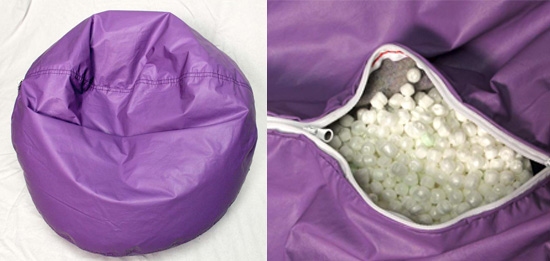
The bean bag chairs have zippers which can easily be opened, a violation of the CPSC’s voluntary standard. Children can crawl inside, become entrapped and suffocate from lack of air or choke on the chair’s foam beads.
Prompting the recall were the deaths of a 12-year-old boy from Texas and a 3-year-old girl from Kentucky. The children were found inside bean bag chairs after suffocating. The boy’s mother told the media that the bean bag chair had been in her son’s room for years and she never thought he would climb inside.
The CPSC instructs consumers to check for these bean bag chairs in their homes. For the full list of recalled models, see the end of this blog.
The chairs have two zippers. Consumers can contact Ace Bayou for a free repair kit to permanently disable the zippers. Consumers should take chairs which can be unzipped away from children.
The defective products were sold at Bon-Ton, Meijer, Pamida, School Speciality, Wayfair and Walmart and online at Amazon.com, Meijer.com and Walmart.com. They were sold prior to July 2013 for $30-$100.
Another option is to simply remove these products from your home altogether. Call Ace Bayou and ask them how to safely dispose the product. (Remember, you should never give someone a recalled product or resell it to anyone. Reselling a recalled product is against federal law.)
Bean bag chairs have a history of injuring children. In the 1990s, the CPSC received reports that 5 children died from suffocation inside bean bag chairs and 27 were injured but recovered. It then launched an industry investigation and recalled 12 million bean bag chairs. More than a dozen manufacturers were involved in that recall effort.
More Recall Information
CPSC Recall Notice Read More
Talk to Your Loved Ones About Supervising Children by the Pool. This is the Most Important Job of Summer.
The long and lazy days of summer are finally here and many of us are spending them by the pool. We hope you enjoy these times with your friends and family. And please remember to think about safety.
Each year in the U.S., nearly 5,000 children under age 15 are treated for pool- or spa-related injuries at hospital emergency rooms, according to the Consumer Product Safety Commission (CPSC). Nearly 400 children under age 15 are killed in swimming pool and spa drownings. More than 75 percent of these children are under the age of 5 and the majority of these deaths occur at private residences. But injuries can happen at any pool where someone stops paying attention or is negligent, including hotel swimming pools, community centers and other places.
Prevent injuries this summer by talking about the rules of safety with your family and friends.
Pool Owners. You have a responsibility to keep your pool area safe for family and invited guests and to secure it from others. You must keep your pool behind a fence which is at least four feet tall and secures with a self-latching and self-closing gate. But we encourage you to go a step further. Try walking around your fenced-in pool area. Are there areas where a young child could easily get in on their own? If so, make adjustments.
If you have questions, a good resource is your town’s local building department.
Drain Covers. Keep children away from pool drains, pipes and other openings which could cause entrapment.
Home Spa Safety. If you have a home spa, install and use a child-proof locked safety cover to keep children out.

Watch Children Closely. Before the swimming season, learn CPR. Then when you head to the pool, set aside all distractions and watch the children. Avoid distractions such as reading, cell phone calls, and texting–supervision should be treated like a job.
When supervising young children, swim with them and practice “touch supervision.” For older children, watch them and be involved with them even if you are not swimming. Talk to them and let them know if they are doing something they should not be. If you are part of a group of adults watching children swim, designate someone the “pool watcher” so that the children are supervised at all times. But still supervise your own children at all times.
Likewise, at hotel and community pools, do not rely on lifeguards to watch your children.
Dress Children Appropriately. Make sure children are not wearing swimming suits or hair accessories that can get caught in pool drains or other openings.

Poolside Toys. Many pool accidents involve diving board, sports equipment, rafts and pool slides. Always look before you use. If something looks unsteady, do not use it.
Many pools no longer have diving boards because homeowner’s insurance companies have stopped providing coverage for them. But if you are going to dive, make sure the water is at least 10 feet deep.
Avoid portable pool slides, inflatable toys and using backyard trampolines with the pool. These products may not be designed for use with a pool or may be defective. In one Massachusetts case, a Colorado woman visiting the state died in 2006 after she slid down a Banzai brand inflatable slide at a backyard pool. It partially deflated, causing her to strike her head on concrete by the pool. The Consumer Product Safety Commission later recalled 21,000 of the Banzai brand inflatable slides and continues to recall unsafe pool toys and equipment each year.
Broken Glass. Do not bring beer bottles and glass out to the pool. Serious accidents can happen if the glass breaks in or near the pool and someone steps in it. If there is broken glass in the pool, it will be invisible and therefore impossible to find safely. Beyond injury, you will have a lot of clean-up. First you will have to drain the pool and then you will have to sweep it thoroughly.
Read More
General Motors’ $35 Million Fine Starts Years of Investigations, Wrongful Death Lawsuits
General Motors (GM) has been fined $35 million for waiting a decade to recall vehicles with faulty ignition switches. The defects have now been linked to 13 deaths.
Attorney David White of Breakstone, White & Gluck appeared on Fox 25 TV in Boston last week to discuss the fine, GM’s recent bankruptcy proceedings and his thoughts about handling recall notices.
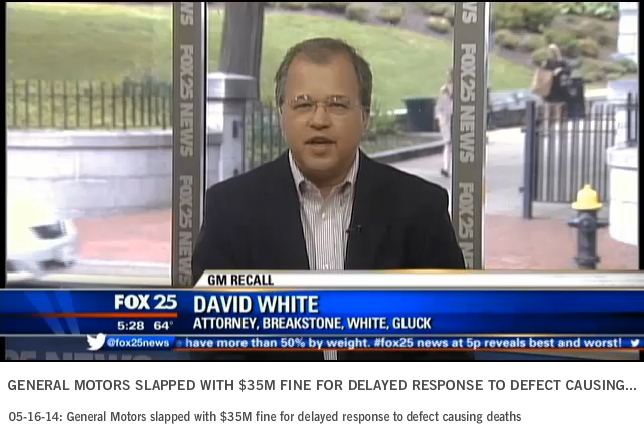
This is an important topic because we have seen many auto recalls in recent years, but 2014 may set the record, according to this Los Angeles Times article.
White said the fine is the first step in a long process ahead.
“Really this is just a slap on the wrist for the corporation,” White said. “It’s a civil fine. It’s the maximum civil fine that they could be exposed to at this point, but GM is looking at years of investigation and probably… maybe even billions of dollars of fines down the road.”
The federal government is sending a strong message that companies need to act within 5 days of learning of safety defects, as required by law, White said.
“Hopefully other automakers get this message and they tune into the need for greater safety, greater attention to safety,” he said. “When they do find a defect, they come right out and say here’s our defect, here’s our concern so consumers can get notice of it promptly and get it fixed.”
Read More
Unsafe Magnet Toys Buckyballs are Finally Recalled
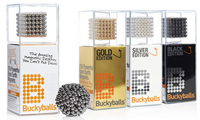 We have written in the past about Buckyballs, a dangerous magnetic desk toy which has injured too many children. Last week came another development, which we hope finally removes this unsafe product from circulation.
We have written in the past about Buckyballs, a dangerous magnetic desk toy which has injured too many children. Last week came another development, which we hope finally removes this unsafe product from circulation.
On May 12, the U.S. Consumer Product Safety Commission (CPSC) announced a voluntary recall for all Buckyballs and Buckycubes. The recall settles an administrative case filed by the CPSC in July 2012. As part of this, Craig Zucker, the former chief executive officer of Maxfield & Oberton Holdings, agreed to establish a Recall Trust. Consumers will be able to request a refund from this fund, which will be controlled by the CPSC. The agency also urges the public to stop using these defective products immediately and look for loose pieces.
Maxfield & Oberton Holdings began selling Buckyballs in 2009. The company said the magnetic desk toy was intended for adults. The problem is if a child starts playing with the tiny magnets, they can swallow them. The magnets can attract inside a child and cause painful intestinal injuries. Surgery is often required and there can be serious longstanding health consequences, such as children having to consume food through a feeding tube.
The CPSC first worked with the company to improve warning labels. The products were marketed for children “Ages 13+” and the CPSC said they should have been marketed for age 14 and up. The company agreed to recall 175,000 magnetic toys and made the change. But the injuries continued. In July 2012, the CPSC filed a lawsuit asking the company to stop sales altogether, a rare legal action the agency has only taken four times in 11 years. The agency alleged that Buckyballs and Buckycubes contained, “a defect in the design, packaging, warnings and instructions, which pose a substantial risk of injury to the public.”
Maxfield & Oberton refused to recall Buckyballs and Buckycubes and in December 2012, the company went out of business. But it was vocal about disagreeing with the CPSC and posted this message on its website:
“Due to baseless and relentless legal badgering by a certain four letter government agency, it’s time to bid a fond farewell to the world’s most popular adult desk toys, Buckyballs and Buckycubes. That’s right: We’re sad to say that Balls & Cubes have a one-way ticket to the Land-of-Awesome-Stuff-You-Should-Have-Bought-When-You-Had-the-Chance.”
In April 2013, six retailers voluntarily recalled Buckyballs and Buckycubes while the CPSC kept trying to raise awareness about the dangers of Buckyballs and other magnetic toys. It established the Magnet Information Center as a consumer resource. Between 2009 and 2011, the CPSC estimates there were 1,700 ER-treated magnet ingestion cases related to high-powered magnet sets.
Zucker will have to eventually fund a website, where consumers can apply for a refund.
Related:
Buckyballs and Buckycubes High-Powered Magnet Sets Recalled Due to Ingestion Hazard; Craig Zucker To Fund A Recall Trust, Settles With CPSC, Consumer Product Safety Commission.
Read More
Toyota, GM and Mazda Make New Headlines for Safety Recalls
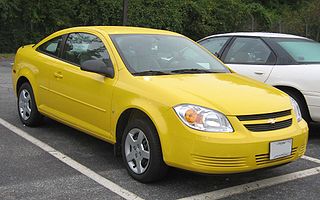 Toyota issues its second largest safety recall ever while GM CEO addresses Congress and Mazda reports a new web of problems
Toyota issues its second largest safety recall ever while GM CEO addresses Congress and Mazda reports a new web of problems
Toyota has more bad news for drivers. Just a few weeks ago, Toyota agreed to pay a record $1.2 billion criminal penalty to the federal government. The Japanese automaker, which has recalled over 9 million vehicles worldwide in recent years, recalled another 6.4 million vehicles on Wednesday for steering, airbag and other safety defects. This is the company’s second largest single recall announcement. Toyota states that it is not aware of any crashes or injuries involving these defects.
In March, Toyota agreed to pay the $1.2 billion criminal penalty to federal government for misleading consumers and the government about unintended acceleration in its cars and trucks. The Justice Department had charged Toyota with wire fraud, but agreed to defer the criminal charge for three years while the company submits to government monitoring.
This week’s recalls involve 27 Toyota models, including the RAV4 and Yaris. The largest recall involves 3.5 million vehicles which have defective spiral cables that can be damaged when the steering wheel is turned. Other defects involve a seat rail that can be pushed forward in a crash, as well as faulty steering column brackets, windshield wiper motors and engine starters.
GM ignition defects draw Congressional inquiry. Last week, General Motors CEO Mary Barra was questioned by Congress about faulty ignition switches in GM vehicles, and about her company’s slow response to protecting the public after learning about at least 13 deaths linked to the defect. GM has recalled over 2.5 million vehicles which may be equipped with the faulty ignition switch.
A week later, the National Highway Traffic Safety Administration (NHTSA) is waiting on more answers from General Motors. It reports the company has failed to respond to more than a third of its written questions. The company is being fined $7,000 each day for failing to fully respond, and the NHTSA is expected to hand the matter over to the Justice Department shortly.
Spiders and hoses and gas, oh my! Mazda also issued a recall this week, one involving an unusual, but familiar safety problem. For the second time in three years, Mazda has recalled 42,000 Mazda6 sedans. This recall involved vehicles from 2010, 2011 and 2012.
The problem is the yellow sac spider. The spiders are attracted to the smell of gasoline and can weave a web in the evaporative fuel hose, causing pressure to build up in the fuel tank. Too much pressure can cause fuel tank cracks, leaks and fires.
In 2011, Mazda had recalled 65,000 Mazda6s from 2009 and 2010 for this defect. The car manufacturer attempted to remedy the defect by installing a spring inside the vehicle’s fuel line, but recently reported nine cases in which this was not adequate. The company is not aware of any fires due to the defect, but will now notify car owners. The remedy requires checking of the evaporative canister vent line and software reprogramming.
Read More

